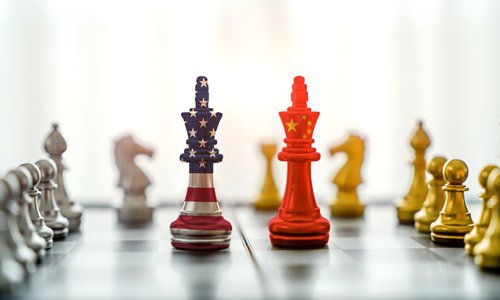
File photo
The phase one China-US economic and trade agreement marks an important first step toward a final settlement of the two countries' trade disputes. They need to continue to meet each other halfway and implement the agreement well.The phase one deal reflects the principles of equality and mutual respect, and proves that the world's top two economies are capable of properly addressing their differences.
In the deal, the US side has pledged to cancel some of its additional tariffs on Chinese products, marking a policy change from hiking to cutting additional tariffs.
The two sides have also agreed to further broaden market access, including the further opening-up of their financial markets, in order to provide more opportunities for both Chinese and US businesses.
The deal is of great significance for the two countries as it reins in the destructive trade frictions between the world's two largest economies.
Trade wars have no winners, plain and simple. Since the US initiated its protectionist tariffs campaign against China 18 months ago, losses have grown too great to deny.
Farmers in the US states of Iowa and Illinois watched their soybeans pile up, fearing they might lose the China market. US importers are paying the price of punitive duties at customs and struggle with rising costs; ordinary working families have to pay more for the same products at Walmart and Target.
Over the decades, bilateral trade between the two countries has grown in scale and still boasts tremendous potential. With China currently pursuing high-quality economic development, the deal can help meet the country's swelling demand for agricultural and energy products.
For the US, China is not only the second-largest importer of US agricultural products, but also an indispensible host to many US enterprises. A normalized economic and trade relationship would mean more business opportunities for US firms.
Expect the world to profit from the trade pact. The global economy has been battered over the past two years. A spike in tariffs has taken stock markets worldwide on a roller coaster ride, rattled supply chains internationally and obfuscated global economic prospects. Consequently, the world economy in 2019 is expected to deliver its slowest growth since the 2008 global financial crisis, according to the International Monetary Fund.
Amid an increasingly uncertain world economic outlook, the deal can help shore up global confidence and stabilize financial markets.
During the consultations, Beijing demonstrated consistent strategic composure, the utmost sincerity and steadfast patience, and rejected Washington's unreasonable demands.
The trade talks have provided a blueprint for the two sides to tackle other areas of concern and manage their differences in the future.
The signature of the deal is only the start of a greater process. The two sides need to implement the agreement and continue to meet each other halfway.
Decision-makers in Washington must join their Chinese counterparts in moving China-US relations forward based on coordination, cooperation and stability. That would ensure the sound stewardship of the world's most important bilateral relationship.
